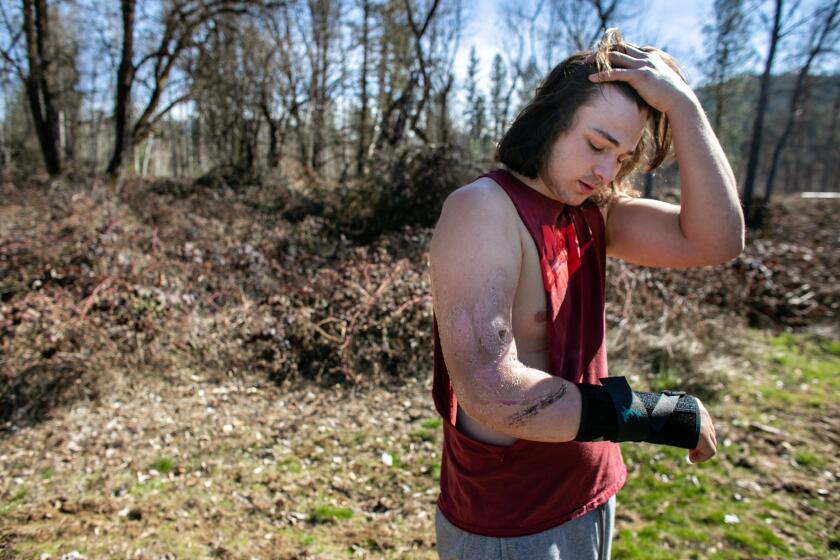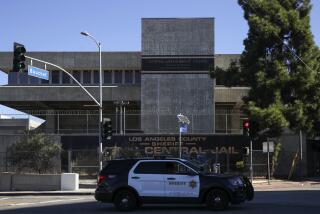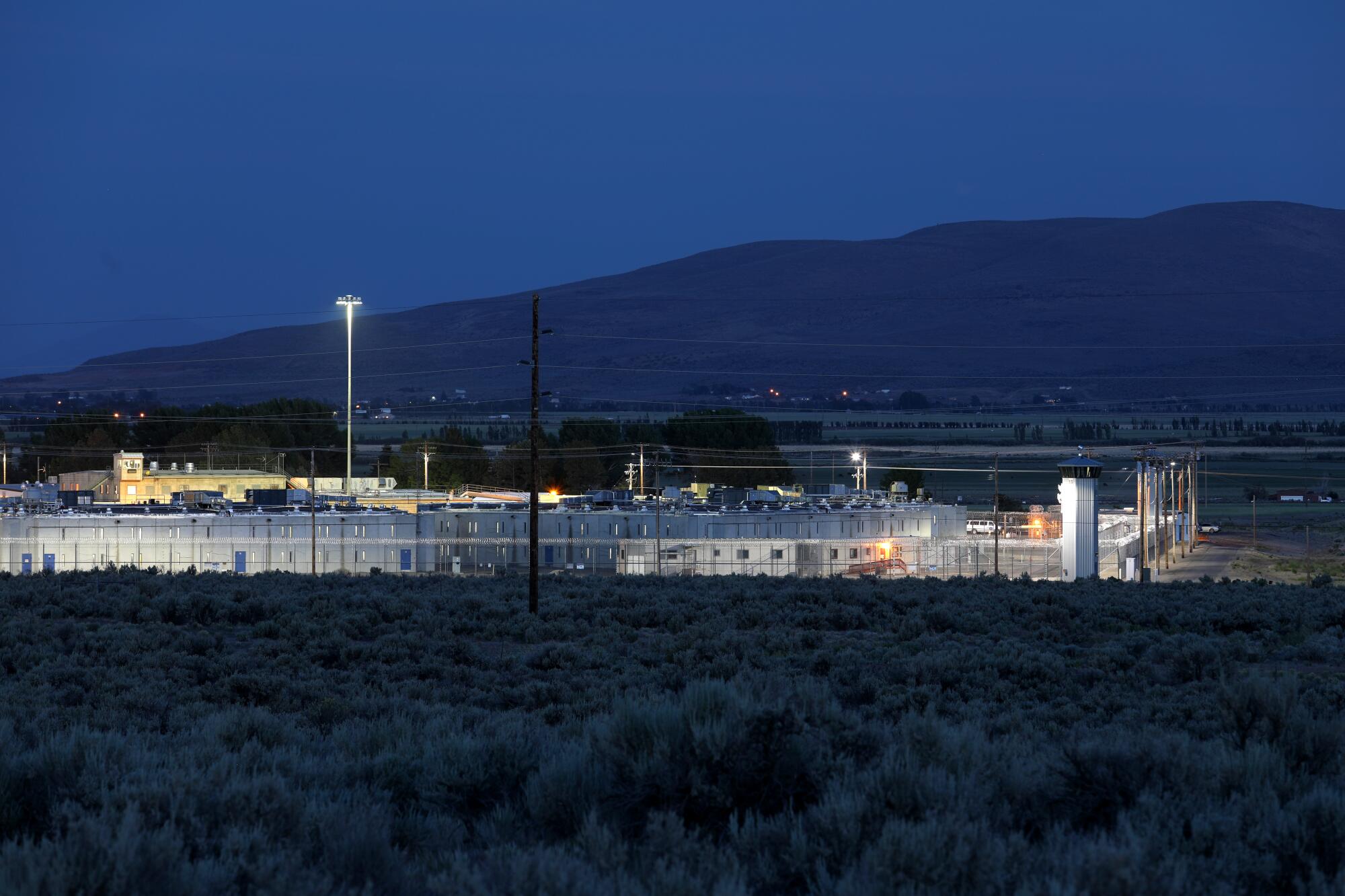
SUSANVILLE, Calif. — When Mike O’Kelly was a boy, this was a timber town.
In the early 1900s, his grandfather drove a herd of cattle more than 200 miles from the Oregon border to this remote outpost near the Nevada state line where he sold milk to millworkers and loggers.
He ran a dairy, and so did O’Kelly’s father, whose children grew up watching logging trucks speed past their house.
By the 1950s, the mills had started closing, but the California Correctional Center opened in 1963, bringing jobs — and for O’Kelly, who eventually took over Morning Glory Dairy, brisk business as he sold milk and eggs to the prison.
“They came in, and they promised to buy everything local. It was all about economic benefit to the community,” O’Kelly said. “They got it built, and we became a pretty happy little prison town.”
O’Kelly, 73, says his hometown where he has raised two daughters has given him an idyllic life.
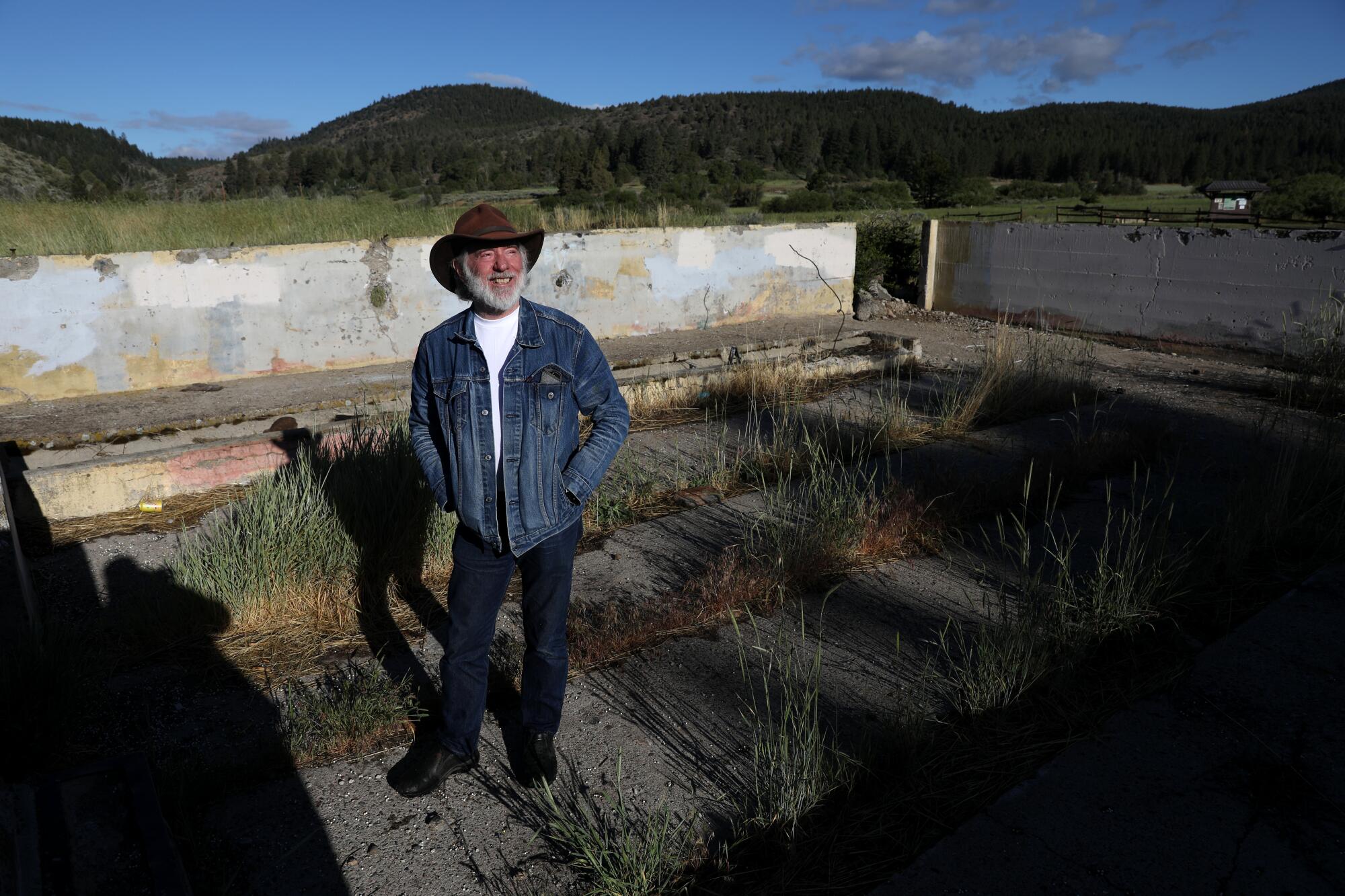
Then in April, the state announced it would close the California Correctional Center, which provides nearly 1,100 jobs and among the highest wages in this impoverished, shrinking town of 8,000 residents, excluding prisoners.
Scores of “for sale” signs have popped up on front lawns. Owners of restaurants and hotels — which rely on inmates’ visitors — fear business could plummet. School leaders are bracing for families with children leaving, which could lead to a cut in funding.
“It’s going to devastate the whole community,” said Gary Bridges, a Lassen County supervisor and third-generation logger.
The California Correctional Center, which houses more than 2,300 inmates, is scheduled to close by June 2022. Inmates will be transferred; there will be no expedited releases because of the closure, according to the California Department of Corrections and Rehabilitation.
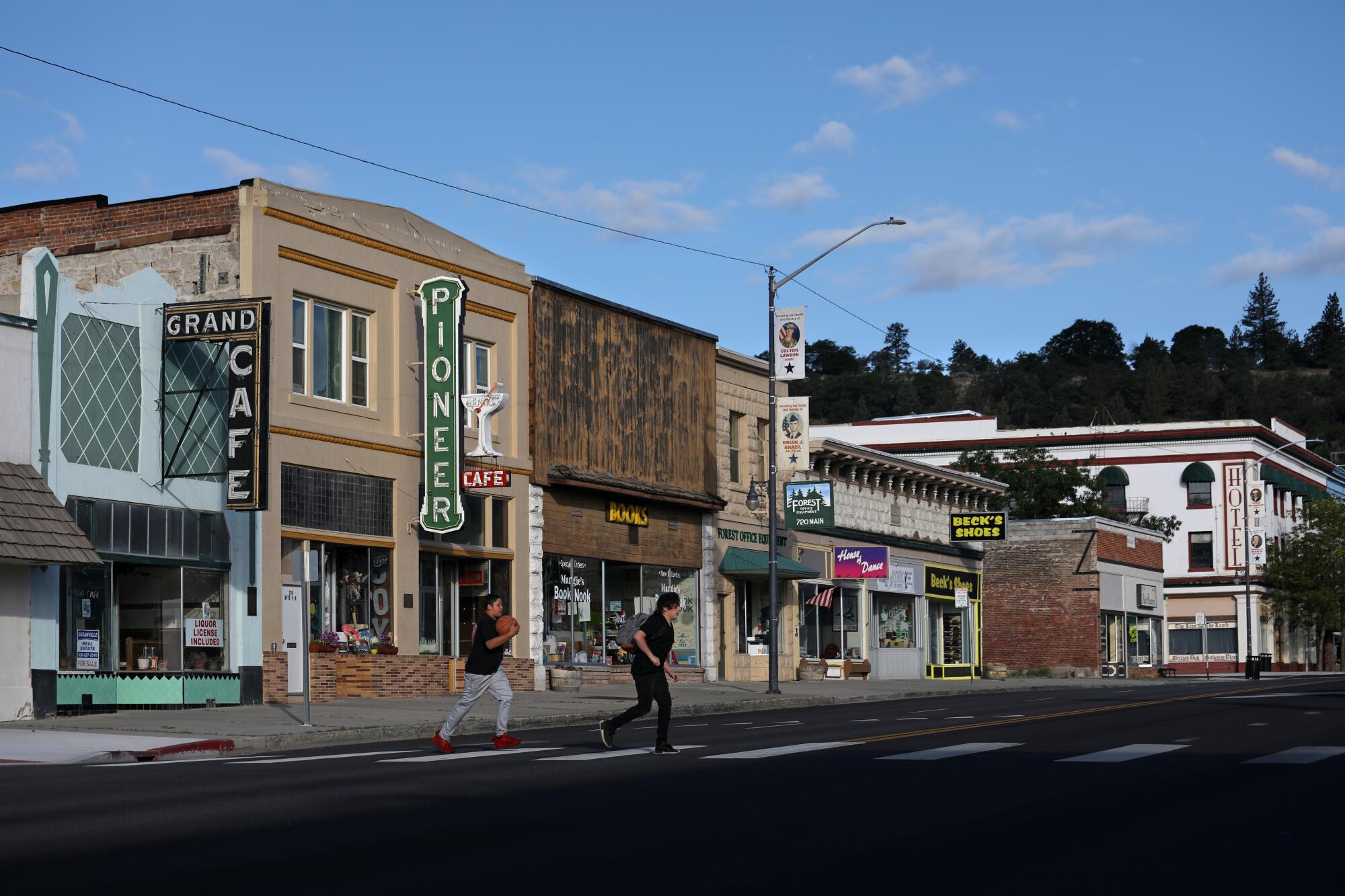
The planned closure fulfills a pledge by Gov. Gavin Newsom to close two of California’s 35 state prisons as the inmate population declines. A prison in Tracy — one of the fastest-growing cities in California, with 98,000 residents — is slated to close in September. Closing the Susanville prison will save about $122 million a year, according to the corrections department. The state is projected to spend $17 billion on corrections this year.
California’s inmate population has tumbled from its peak of 173,000 in 2006. The pandemic hastened that decline as the state released early thousands of inmates, including those serving time for violent offenses, because of the health crisis. As of May 31, there were 97,200 inmates in custody, a 21% decrease since January 2020.
“The closure of the two state prisons was included in the Governor’s budget plan prior to the pandemic as a result of various criminal justice reforms, many of which were approved by California voters, and a federal court order mandating that the state significantly reduce its prison population,” Dana Simas, a spokeswoman for the California Department of Corrections and Rehabilitation, said in a statement to The Times.
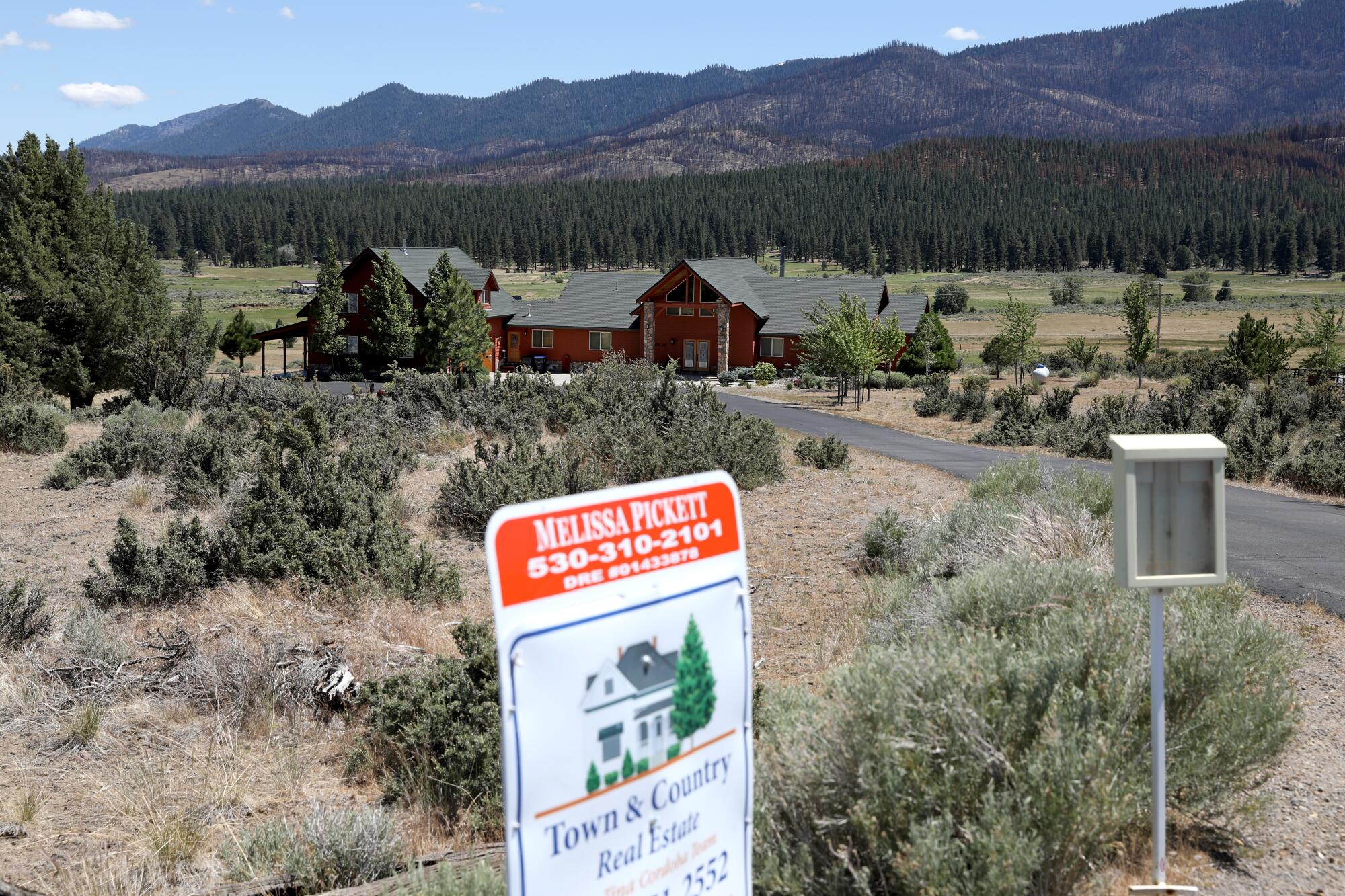
Few places rely on a prison as much as Susanville, the only incorporated city in Lassen County. The nearest city, 86 miles away, is Reno.
Surrounded by forests, mountains and lakes, Susanville is a place of striking natural beauty. The air smells of pine trees. Deer wander through frontyards. But it’s an isolated town stuck in a long decline.
In the 1860s, the first residents — who considered the area part of Nevada because it was east of the Sierra and felt cut off from the rest of the state — fought a two-day armed border dispute against California officials, the Sagebrush War, which eventually led to the creation of Lassen County.
Since the pandemic started, tensions between the county and the state have flared over the latter’s transfer of coronavirus-infected inmates last summer, which led to a major outbreak, and over coronavirus testing efforts.
Many in town believe Newsom is retaliating against conservative Lassen County, which had among the state’s highest concentrations of people signing a petition to recall the governor and where 75% of voters cast their ballots for then-President Trump last fall.
Simas says that’s untrue.
“Allegations that the decision to close CCC was made for any reason beyond what is statutorily required for consideration are categorically false,” she said.
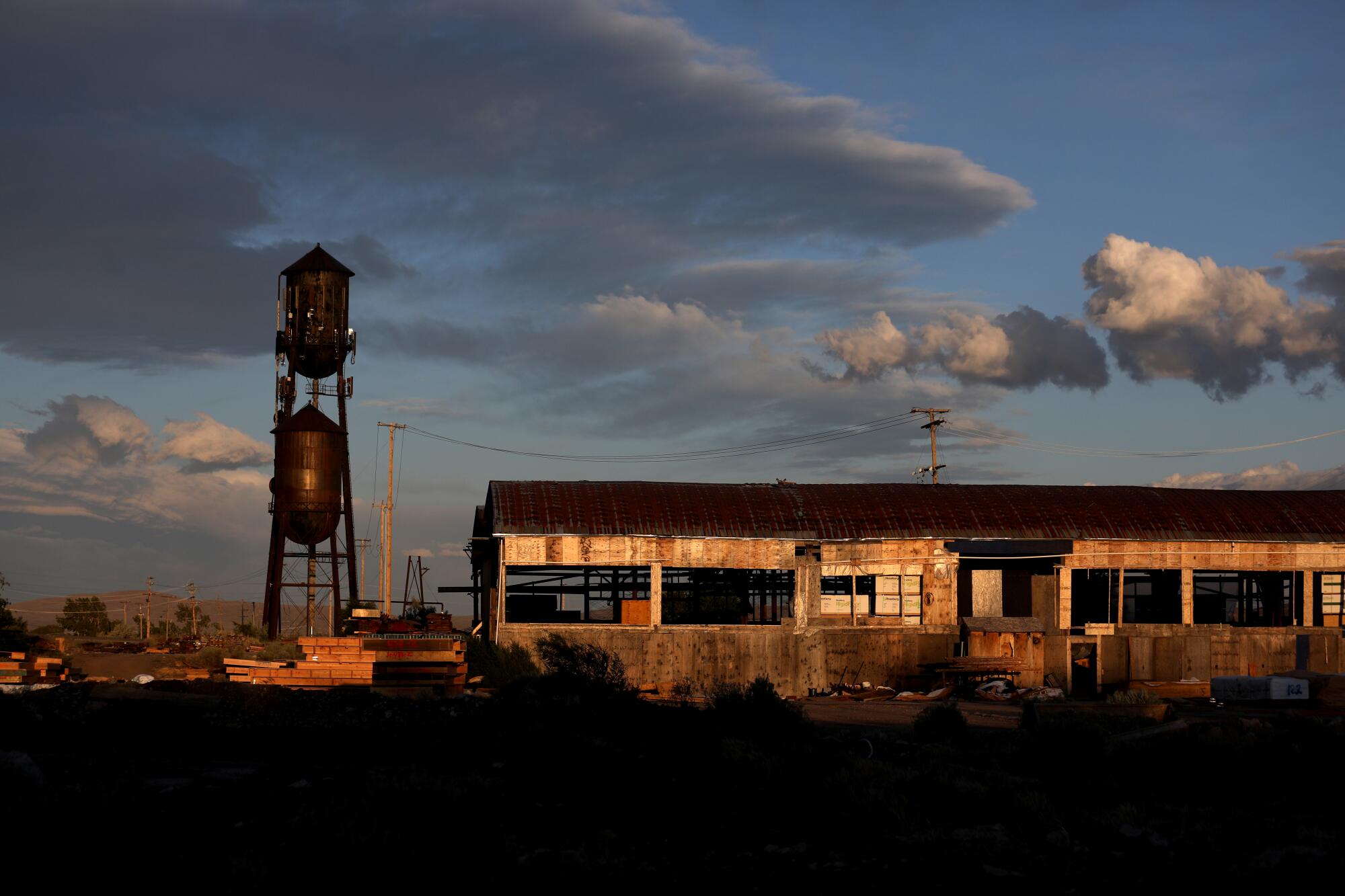
More than 45% of the employment in Susanville is at CCC and the adjacent High Desert State Prison, which opened in 1995. The average pay for non-management correctional staffers is $87,500, not including benefits and overtime — generous-paying jobs in a county where only 13% of residents have a bachelor’s degree.
Nationwide, many struggling small towns welcomed correctional facilities during the prison-building boom of the 1980s and ’90s, amid the war on drugs that led to a dramatic increase in incarceration that disproportionately affected Black and Latino people.
Nicole Porter, director of advocacy for the Sentencing Project, which supports reducing incarceration, said the state should help communities hurt by the closing of prisons.
“It’s the state’s responsibility to help guide a conversation around redevelopment. That community’s economic success should not be predicated on being a human warehouse that disappears people from their homes,” she said. “The state created this problem, and it’s the state’s responsibility to address it.”
In a February report, the California Legislative Analyst’s Office recommended the state provide a list of prisons that were strong candidates for closure so that money was not spent unnecessarily on infrastructure repairs in soon-to-be-closed facilities.
The report recommended four prisons for closure because of high estimated repair and operational costs: the California Rehabilitation Center in Norco; the California Men’s Colony in San Luis Obispo; San Quentin State Prison in San Quentin; and the Correctional Training Facility in Soledad.
Many in Susanville, which plans to sue the Newsom administration, said they were blindsided by the state’s announcement, which was made via news release on April 13. They wonder why the CCC was chosen for closure over older, more rapidly deteriorating prisons and those in urban areas with more employment opportunities.
The California Department of Corrections and Rehabilitation declined to answer questions from The Times about when the prison was selected for closure and when local officials, law enforcement, prison employees and inmates were notified.
“We’ve asked on multiple occasions, multiple levels, multiple departments, for any analysis they’ve done to compare which facilities should be closed based on the criteria that are established in the penal code,” said Richard Egan, the Lassen County administrative officer. “They have thus far failed to substantively respond in any meaningful way.”
Republican state Assemblywoman Megan Dahle, who represents the area, said in a statement that since the city announced it would sue, “the Governor’s office and CDCR have indicated they will no longer meet with us or continue negotiations.”
She and her husband, state Sen. Brian Dahle (R-Bieber), said prison employees were told of the closure via news release.
Sen. Dahle said the governor’s office had since told him that one factor for choosing the Susanville prison was its dorm-style housing, which made it difficult to isolate sick prisoners. But he said trust of the Newsom administration here was low.
Jason Bernard, 51, who retired in October after working at the prison for two decades, said he ran into disheartened correctional officers every day.
“You have people that were born and raised in this town that went to work at CCC right out of high school,” he said. “They’re shrugging their shoulders like zombies, not knowing what’s going to happen.”
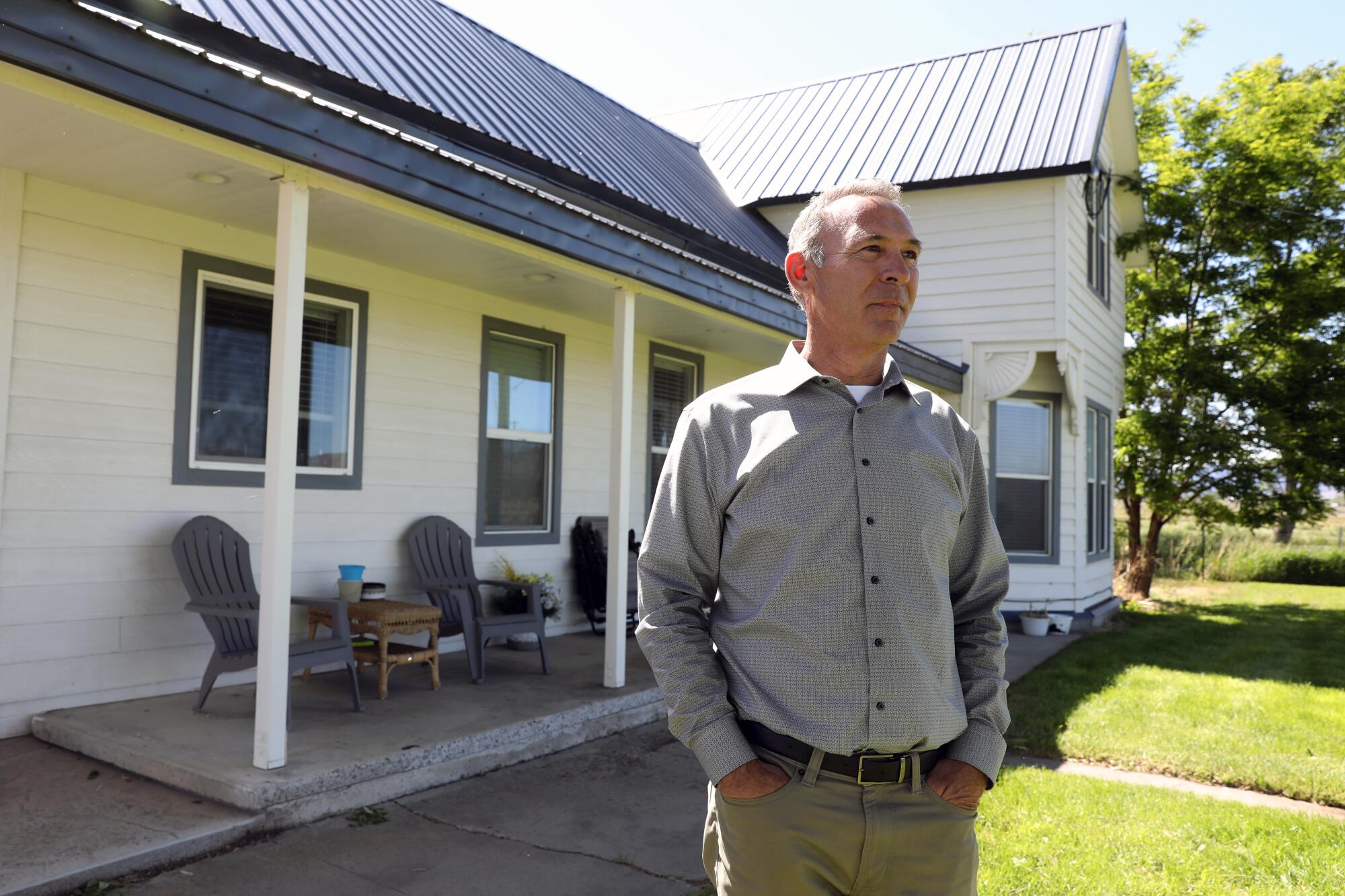
Susanville’s official population — 13,717 last year, according to the city — has long included thousands of inmates at both of its state prisons, a boost that makes the town seem bigger and more attractive to incoming businesses.
But Susanville has been shrinking dramatically over the last 15 years. Counting prisoners, Susanville’s population dropped 25% since 2005. Not counting prisoners, it shrank 13%.
“There are so many incentives for businesses to locate in Nevada versus California,” said Lassen County Sheriff Dean Growdon, who has 23 deputies patrolling an impoverished region larger than Delaware and Rhode Island combined. “It’s been a real challenge here to bring in any kind of industry, so we were one of the few counties that was going to welcome prisons.”
Mayor Mendy Schuster, whose husband worked for three decades at the prison, said she feared an exodus of CCC employees and their families.
“We have population-based funding,” she said. “It’s going to affect the city’s funding. We don’t know how it will affect citizen services. There’s this whole domino effect that’s happening, and it’s the feeling about town. It’s sad.”
Schuster used to work in the local high school’s counseling department. She said many students said they planned to work at the prison.
“They go into a vocational field that pays well, has a good retirement,” she said. “They see their dads and grandfathers go into it.”
Those who do want to go to a four-year university have to leave. Increasingly, she said, “there’s nothing to come back to.”
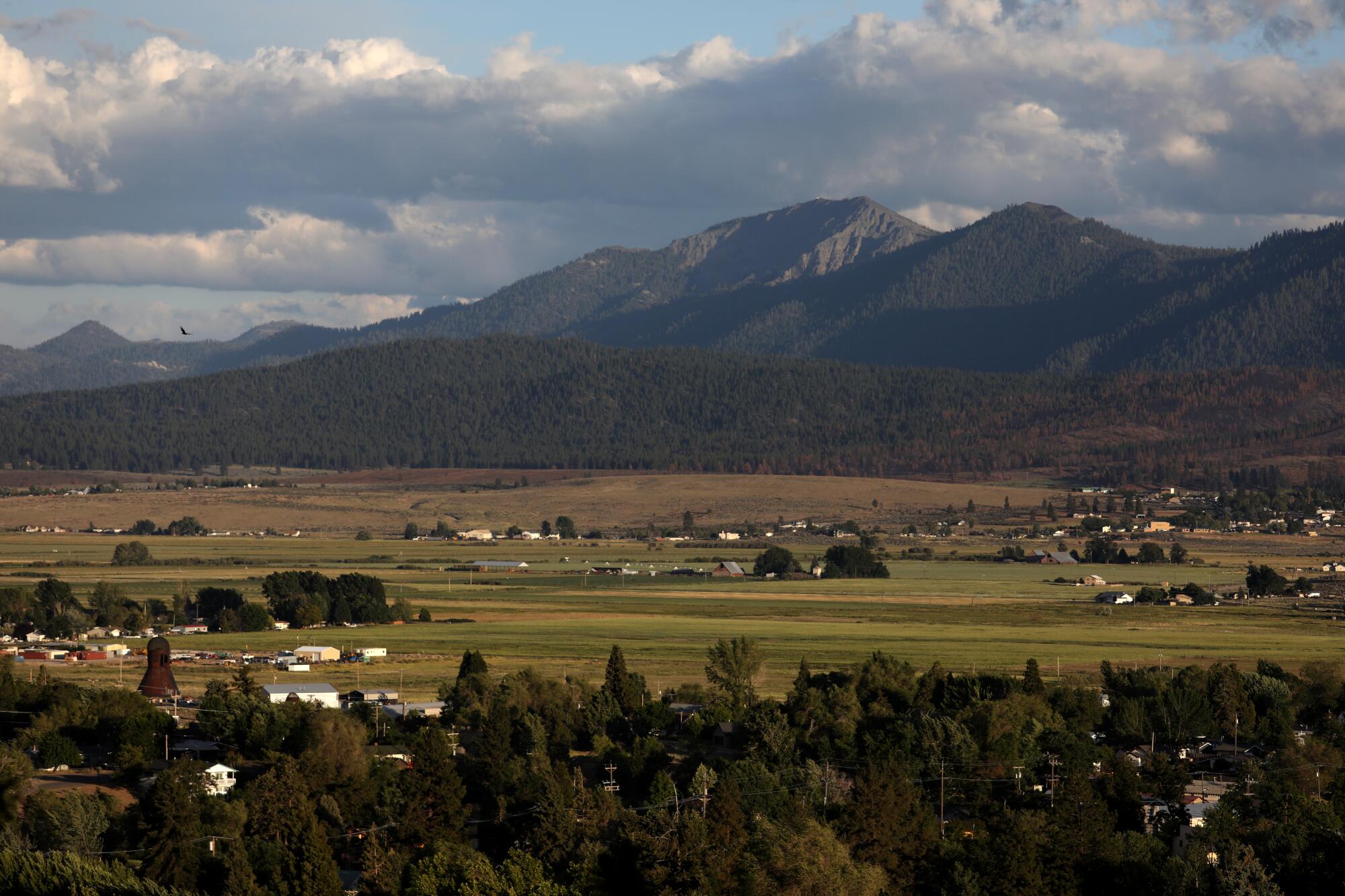
Patricia Gunderson, superintendent for the Lassen County Office of Education, said she was in a Zoom meeting in April with school administrators when one of them gasped. He had just gotten the news release announcing CCC’s closure.
“We just kind of looked at each other like, ‘Oh, my God, what now?’” she said.
Soon, her son, a correctional officer at the prison, called her, stunned after getting the news via email.
In its 10 public K-12 school districts, the county has about 3,600 students, a number that has been declining for years.
Losing the children of prison employees could be catastrophic because school funding is tied to average daily attendance, Gunderson said. An elementary school in Johnstonville that has about 178 students could lose 28% of those children, according to district figures. Lassen High School in Susanville could lose 17%.
Gunderson said she had been scrambling to figure out how she could gain a reprieve from attendance-based funding for a few years to adjust to the sudden loss. She said schools might have to lay off staff, share services or consolidate tiny districts.
Lassen Community College President Trevor Albertson said his school could lose funding, too. Of the roughly 1,500 students enrolled, about 200 are inmates at CCC. Professors have long traveled to the prison to teach classes face-to-face.
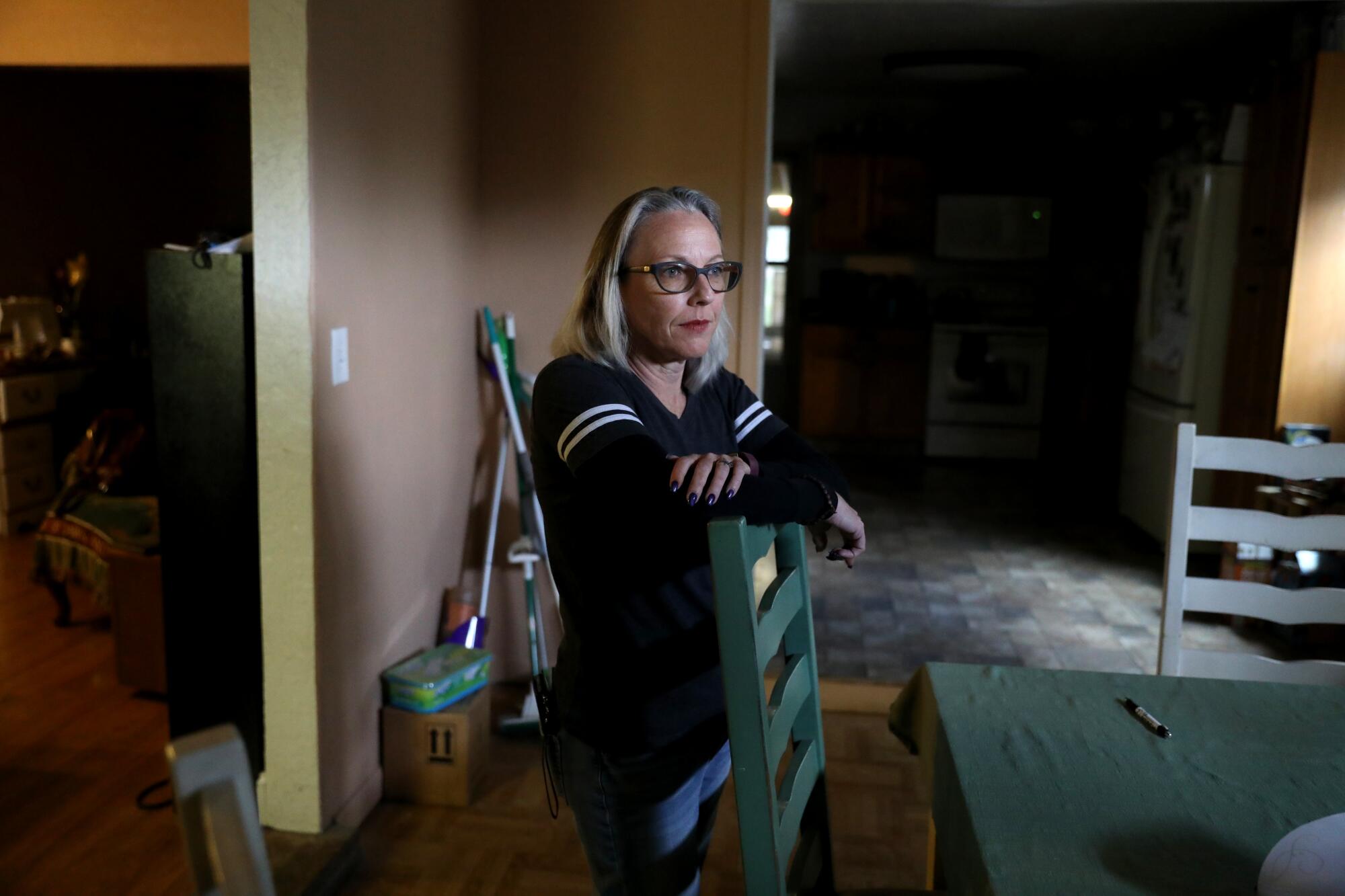
One of the imprisoned college students is Michael Arteaga, a 45-year-old CCC inmate serving life without the possibility of parole for a double homicide in Riverside County committed when he was 18. He has spent most of his sentence in Susanville’s two prisons.
He is working toward an associate’s degree through Lassen College and is involved with numerous self-help programs at the prison.
In a letter to The Times, Arteaga said inmates had mixed feelings about the closure.
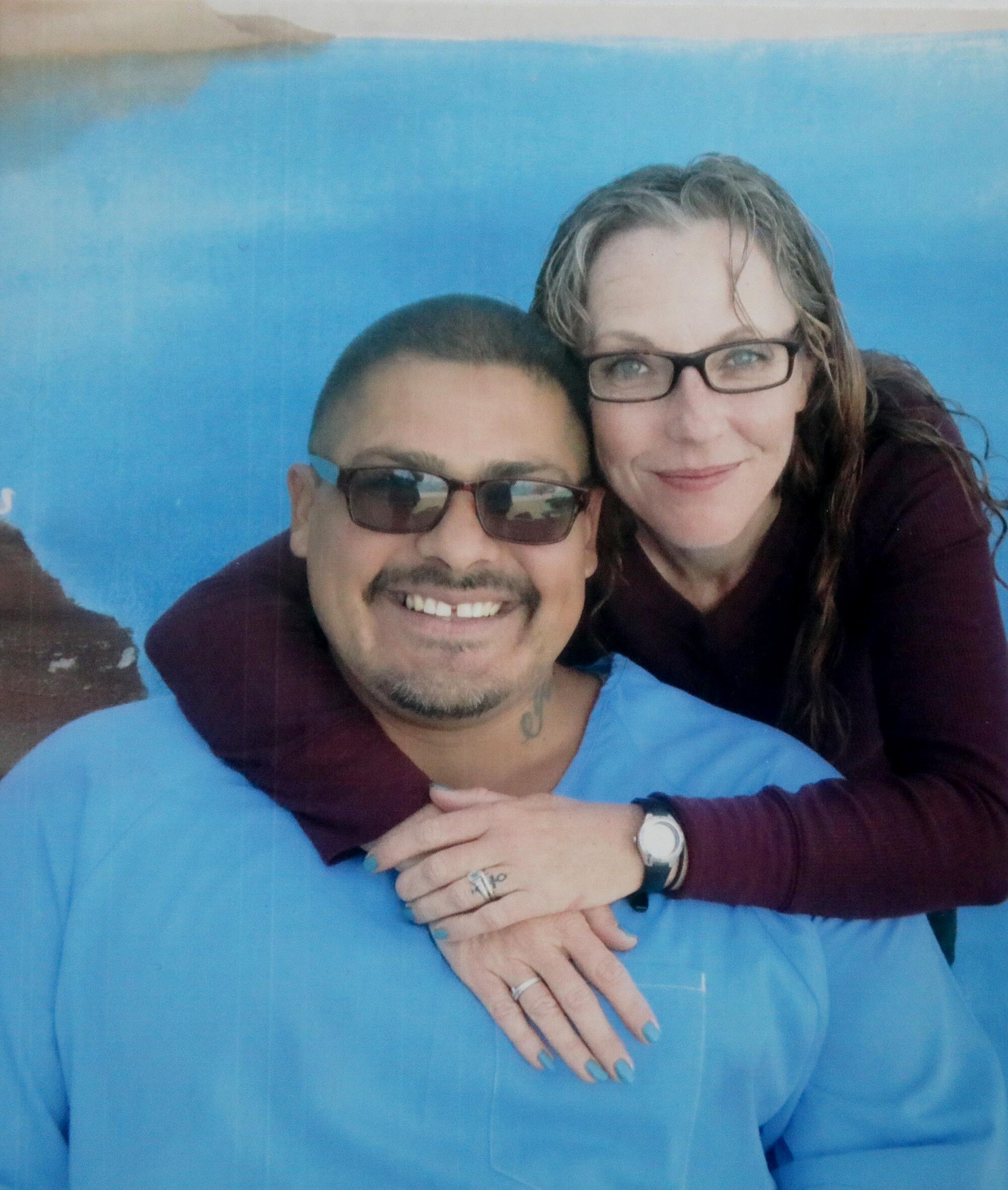
“For those just passing through it’s a welcomed surprise,” he wrote. “However for us long term offenders, it’s an uneasy reality that our program/s is gonna be affected.
“As a lifer, you need stability, and being grounded to your community,” he wrote. “Yet I understand change is also a healthy alternative. It sucks knowing we all have to up-root ourselves and start again, reestablishing programs, and adjusting to another institution.”
Most inmates’ families live hours away from the facility, but his wife, Misty Arteaga, lives 15 minutes away. She sees him every weekend; about every two months, she gets a three-day family visit where she stays with him in a trailer home on prison grounds.
In the early 2000s, Misty, an Army veteran, worked as a correctional officer at High Desert State Prison, where Michael was then incarcerated. She fell in love with him. When her colleagues found out they had been writing each other, she was told to end the relationship or resign. She resigned.
Michael was transferred to California State Prison in Corcoran, where they married behind glass in 2012.
Now a longtime material examiner and identifier at Sierra Army Depot in nearby Herlong, Misty stayed in Susanville, where she has raised two children and loves the laid-back rural lifestyle. She doesn’t know where her husband will be transferred but worries he will be sent to one of California’s notoriously overcrowded lockups.
This month, CCC was 69% full — one of the few state prisons that is not over capacity.
“Nobody was asked our opinions about it or what the impact could be,” she said. “It’s just like — our town is starting to die.”
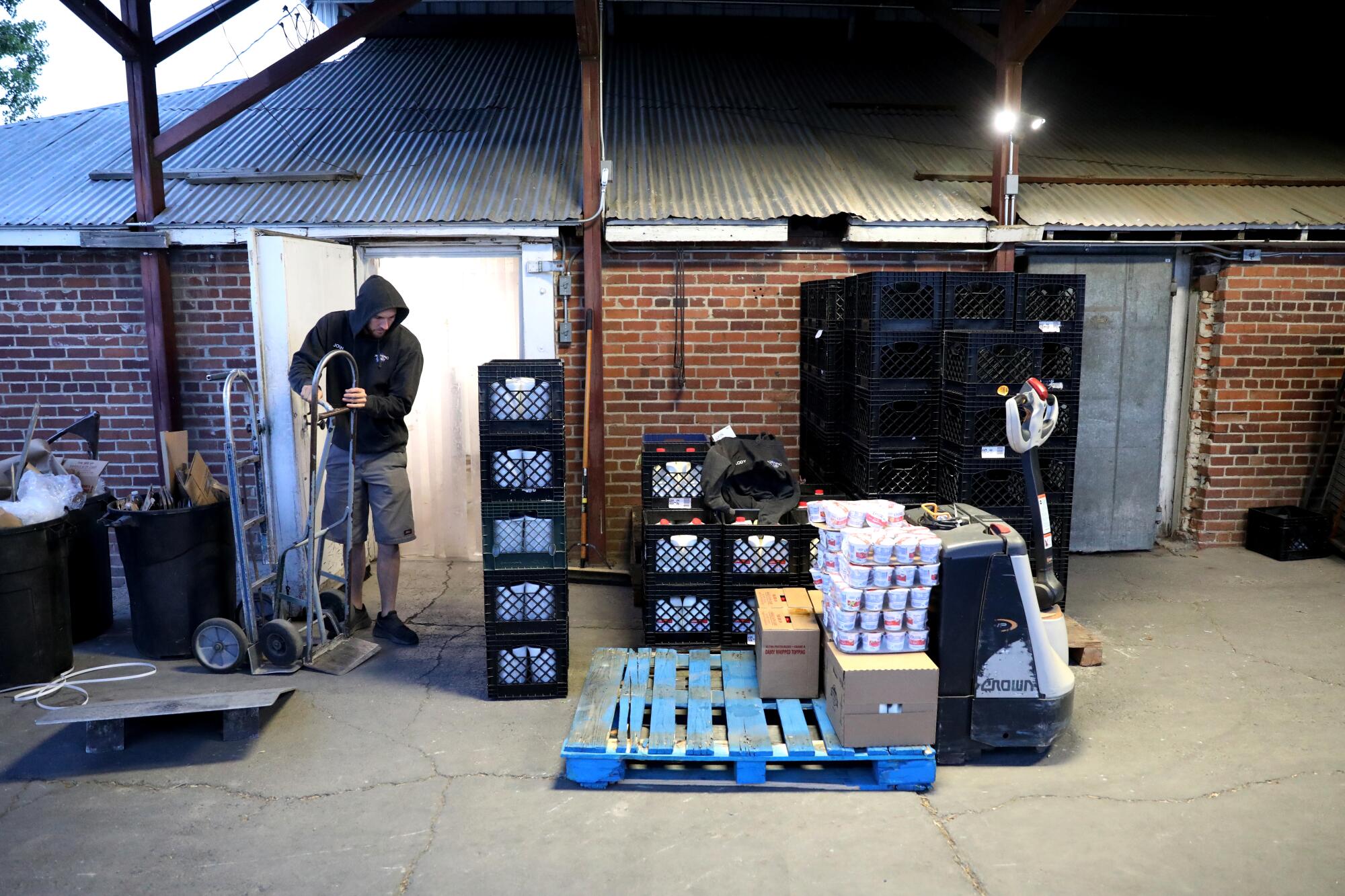
Josh McKernan, 32, took over Morning Glory Dairy in 2017 after O’Kelly retired. At least three days a week, his employees drive trucks loaded with milk and eggs to CCC and High Desert State Prison.
Between the two prisons, he sells 45,000 to 70,000 half-pints of milk and about 5,000 dozen eggs a week — a far cry from the days when O’Kelly sold milk to the prison in 10-gallon metal cans.
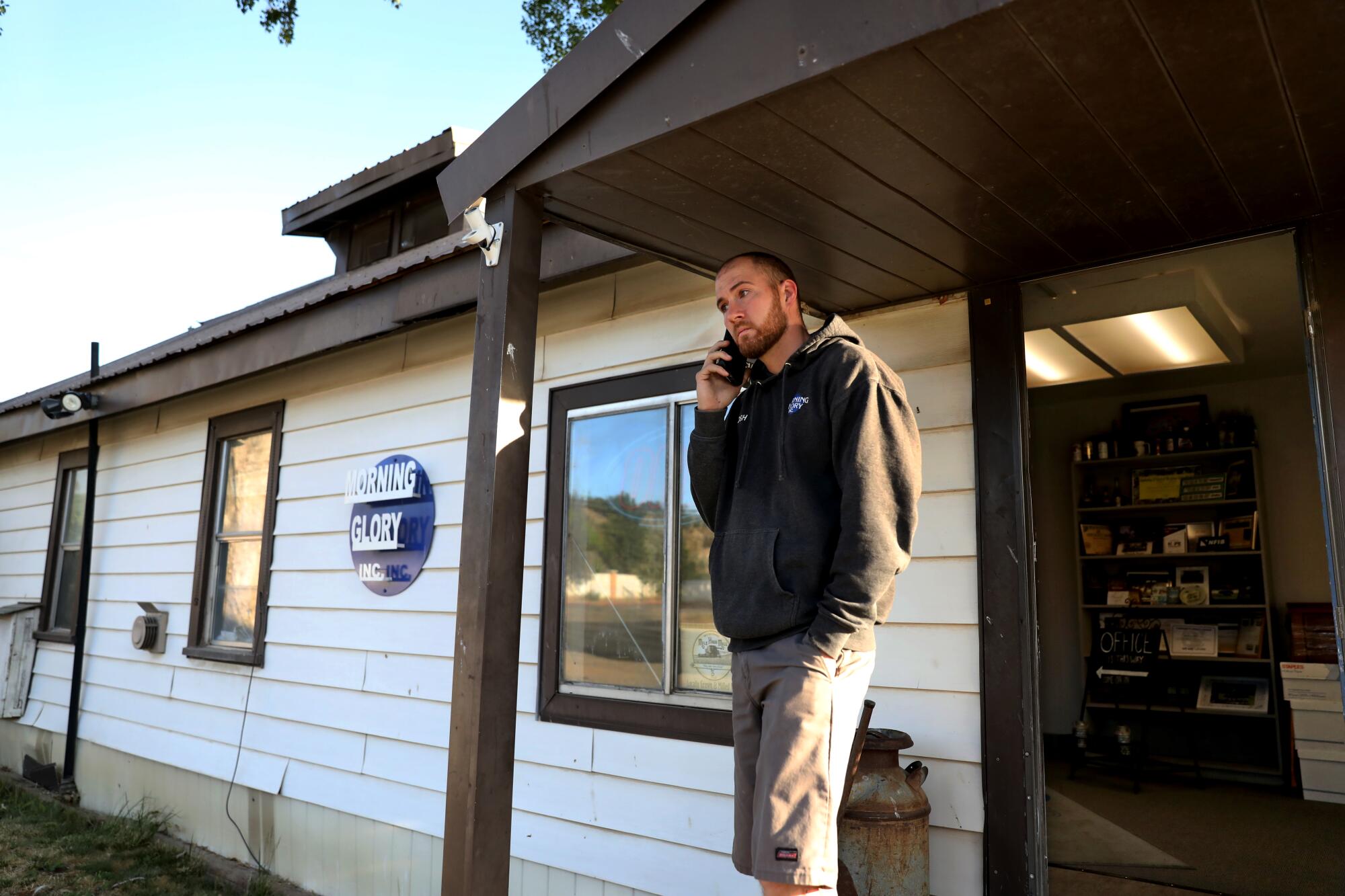
More than a quarter of the dairy’s sales are to CCC, he said. Although it feels increasingly difficult for small businesses such as his to compete with Walmart and Dollar General, the prisons, he said, have been a lifeline.
Days before the closure announcement, he bought himself a new Ford F-250, a personal indulgence after a hard pandemic year.
“You work hard and you finally spoil yourself and it’s like, ‘Oh, the prison’s closing. Hope you didn’t buy a house or anything,’” he said.
McKernan, a father of two young children, said he would probably have to lay off some of his seven employees after the closure. They’re men who work hard, he said, showing up at 5 a.m. and toiling long days until the job is done.
“It would be a different story if this was a big city and we were closing down the prison and there were other places to go,” he said. “But there’s not a lot of pickings around here.”
Times researcher Scott Wilson contributed to this report.
More to Read
Sign up for Essential California
The most important California stories and recommendations in your inbox every morning.
You may occasionally receive promotional content from the Los Angeles Times.

